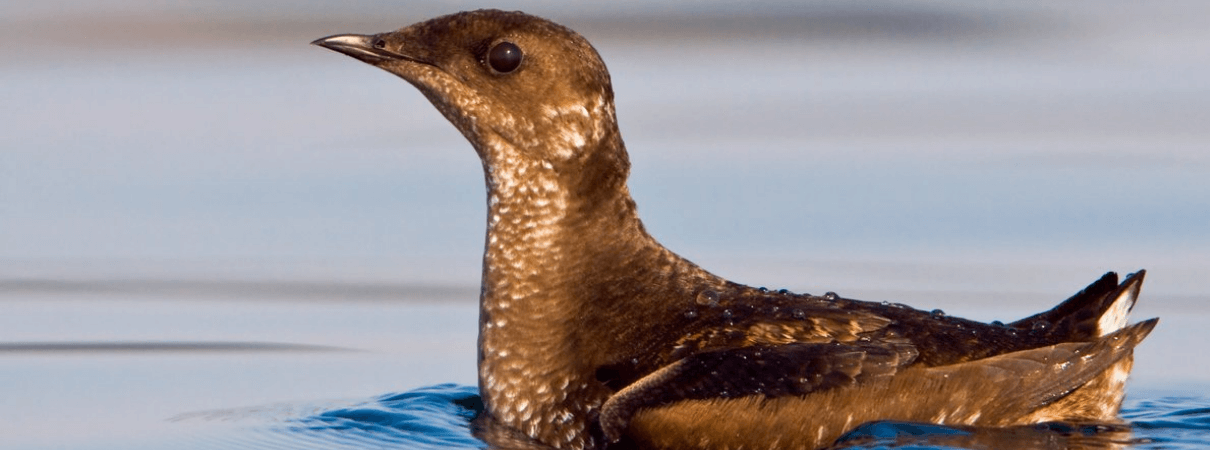Winds of Change: Balancing Birds, Wind Turbines, and Climate Change
These days, the conservation community is grappling with two monumental and interrelated crises: climate change and biodiversity loss. The catastrophic threat they each pose to birds has been shown in two landmark studies.
The first, published in the prestigious journal Science in 2019, found that nearly 3 billion birds have been lost in the U.S. and Canada in the last 50 years, representing a loss of almost one-third of the total bird population in these two countries. The second study found that of 604 North American bird species examined, 64 percent are vulnerable to (i.e., are likely to be negatively impacted by) climate change.
Taking steps to combat these dual crises is critically important, and we must ensure that actions taken to address one do not prove detrimental to efforts to counter the other.

This concern was examined in great detail at a collaborative workshop of international experts convened by the Intergovernmental Panel on Climate Change and the Intergovernmental Science-Policy Platform on Biodiversity and Ecosystem Services. A list of conclusions was presented to guide efforts moving forward, opening with this thought: “Limiting global warming to ensure a habitable climate and protecting biodiversity are mutually supporting goals.”
The tension that can exist in addressing these parallel crises is currently playing out in the expansion of renewable energy infrastructure, such as wind turbines and solar panels. Unfortunately, developing renewable energy resources on an industrial scale comes with a cost to birds and other wildlife.
The Impacts
More than half a million birds are killed in the U.S. each year in collisions with wind turbines alone. This number includes only direct impacts — additional birds are killed each year in collisions with and electrocutions from transmission lines built to connect wind facilities to the energy grid.
Other birds are displaced by construction of wind facilities when that development renders otherwise suitable habitat unusable. As additional industrial-scale facilities are constructed, these impacts will continue to increase. This is amplified when the many threats to birds are considered cumulatively. Minimizing the impacts of rapidly expanding wind energy development on birds needs to be taken seriously.
A Bird's Eye View for Evaluating Wind Projects
Inevitably, a difficult question arises: Can a given industrial-scale wind facility's climate benefits outweigh its impacts to birds and other wildlife? That's why ABC has developed a method to evaluate benefits and risks. We rely on the best available data and our knowledge of birds to determine which species are likely to be present on the site, in what numbers and seasons, and other factors. We evaluate the field studies conducted to inform planning for the facility, considering universal ecological factors like the negative impacts of fragmentation on large blocks of habitat. We view all of this through a lens of species' vulnerability to collisions and displacement, given their unique ecology.
Sometimes, the unavoidable conclusion is that a facility's impacts are likely to be far greater than their benefits to climate. For example, a proposal for the Humboldt Wind project in California included construction of wind turbines in a location that would have posed risks to species including the Threatened Marbled Murrelet, Northern Spotted Owl, and eagles. The Heritage Wind project proposed to place wind turbines just outside a wetland complex in New York that encompasses a national wildlife refuge and two state wildlife management areas, in an area known to be a vital migratory corridor for birds. The Icebreaker Wind project includes plans to place wind turbines in Lake Erie in an area designated a Global Important Bird Area due to its overwhelming importance for birds.
Based on careful analysis, and with key partners, we opposed these projects (or specific turbines, in the case of Heritage Wind). Influential local environmental organizations joined us in opposing Humboldt Wind. The U.S. Fish and Wildlife Service, New York Department of Environmental Conservation, and other bird conservation groups voiced concerns similar to ABC's about the Heritage Wind project (and the state ultimately agreed). The renowned Black Swamp Bird Observatory and many other bird conservation groups opposed the Icebreaker project.
The Big Picture
We at ABC get involved when wind turbines are proposed in places that would cause unacceptable impacts because we feel strongly that preventing the installation of poorly sited wind turbines is an increasingly important way to save birds. Wind facilities are typically approved for 30 years and often have an easy path to approval for many more years of operation. Over this long span of time, a poorly sited wind project could have staggering impacts on birds, so avoiding unacceptable impacts means ensuring that turbines are built in the right places (and not in the wrong ones).
Through these efforts, we and our partners play an important watchdog role, as there is currently little regulatory accountability for the wind energy industry. In most instances, projects do not require permits from the U.S. Fish and Wildlife Service or state wildlife management agencies. The U.S. Fish and Wildlife Service worked with stakeholders to develop guidelines for environmentally responsible wind energy projects, but made the lamentable decision to make them voluntary. As a result, evidence suggests that the guidelines have limited effectiveness.

Further, many states and jurisdictions have no substantial environmental regulations to ensure that impacts to wildlife are minimized. Some are even moving in the wrong direction — New York recently passed a law reducing environmental protections for renewable energy development.
Meaningful Regulations Would Make a Huge Difference
American Bird Conservancy has long advocated for a simple permitting system to implement the Migratory Bird Treaty Act (MBTA), a law enacted in 1918 to protect most migratory birds in the U.S. An MBTA permitting system would require key industries, including wind energy, to adhere to best practices in project planning and implementation. It would improve outcomes for birds, require very little additional effort, and dramatically reduce the chance that major land-use projects would cause unacceptable environmental impacts. Virginia has shown the way by approving a similar regulation, creating a model both for the federal government and other states to follow.
The Vast Potential of Distributed Solar Energy
Distributed solar energy — such as solar panels on homes and businesses — generates energy at or near where it's used in areas of existing development, with no appreciable impacts to wildlife. It's also a powerful job creator and in some areas can provide 100 percent of energy needs. Yet somehow, this win-win solution often takes a backseat to supporting utility-scale projects in policy discussions.
If we're serious about renewable energy, we need to maximize the use of bird-friendly distributed solar.
Keeping Watch
We at ABC are optimistic that, in the future, we will see the wind energy industry reducing its impacts on birds. Until that time, and in line with our mission to protect wild birds and their habitats, we'll continue to speak out for restraint in places where renewable energy projects' potential impacts on birds outweigh their benefits. After all, we are fighting two battles at once: the fight to minimize the impacts of climate change, and the fight to save our planet's irreplaceable biodiversity.
 Shawn Graff is American Bird Conservancy's VP of the U.S. and Canada. Shawn leads ABC conservation programs and projects in the Great Lakes region, fundraising, and building high level relationships with public and private partners and conservation stakeholders. He has extensive experience in consulting local governments, foundations and non-profit organizations on fundraising, site planning, historic preservation and long-range planning.
Shawn Graff is American Bird Conservancy's VP of the U.S. and Canada. Shawn leads ABC conservation programs and projects in the Great Lakes region, fundraising, and building high level relationships with public and private partners and conservation stakeholders. He has extensive experience in consulting local governments, foundations and non-profit organizations on fundraising, site planning, historic preservation and long-range planning.


















































